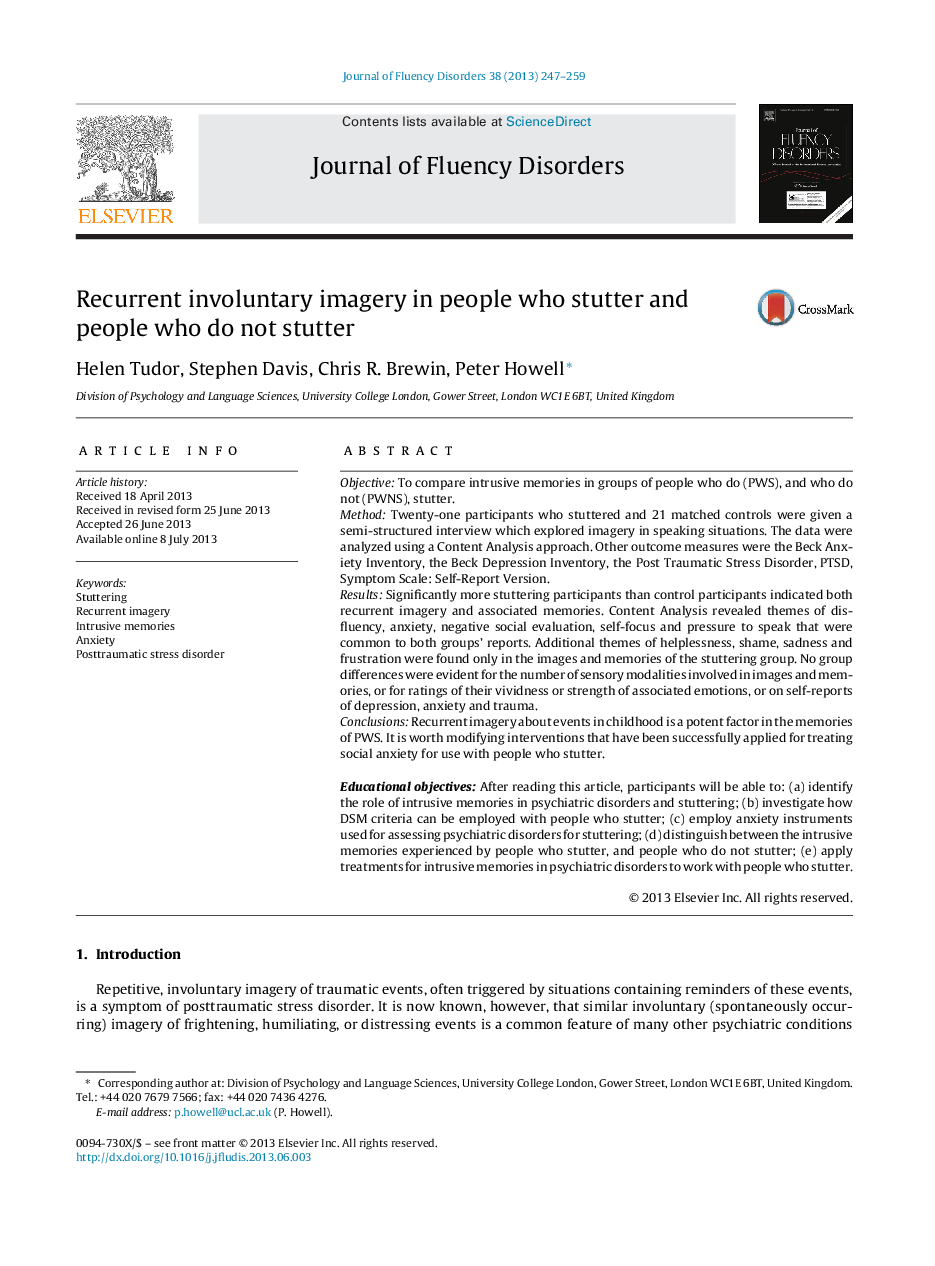| کد مقاله | کد نشریه | سال انتشار | مقاله انگلیسی | نسخه تمام متن |
|---|---|---|---|---|
| 911392 | 917920 | 2013 | 13 صفحه PDF | دانلود رایگان |

• This is the first systematic investigation into intrusive memory in people who stutter.
• It is the first paper to show intrusive memories in patients who do not have a psychiatric disorder.
• The findings show that intrusive memories are ubiquitous in adults who stutter.
• Some new clinical directions are suggested by these results.
ObjectiveTo compare intrusive memories in groups of people who do (PWS), and who do not (PWNS), stutter.MethodTwenty-one participants who stuttered and 21 matched controls were given a semi-structured interview which explored imagery in speaking situations. The data were analyzed using a Content Analysis approach. Other outcome measures were the Beck Anxiety Inventory, the Beck Depression Inventory, the Post Traumatic Stress Disorder, PTSD, Symptom Scale: Self-Report Version.ResultsSignificantly more stuttering participants than control participants indicated both recurrent imagery and associated memories. Content Analysis revealed themes of disfluency, anxiety, negative social evaluation, self-focus and pressure to speak that were common to both groups’ reports. Additional themes of helplessness, shame, sadness and frustration were found only in the images and memories of the stuttering group. No group differences were evident for the number of sensory modalities involved in images and memories, or for ratings of their vividness or strength of associated emotions, or on self-reports of depression, anxiety and trauma.ConclusionsRecurrent imagery about events in childhood is a potent factor in the memories of PWS. It is worth modifying interventions that have been successfully applied for treating social anxiety for use with people who stutter.Educational objectives: After reading this article, participants will be able to: (a) identify the role of intrusive memories in psychiatric disorders and stuttering; (b) investigate how DSM criteria can be employed with people who stutter; (c) employ anxiety instruments used for assessing psychiatric disorders for stuttering; (d) distinguish between the intrusive memories experienced by people who stutter, and people who do not stutter; (e) apply treatments for intrusive memories in psychiatric disorders to work with people who stutter.
Journal: Journal of Fluency Disorders - Volume 38, Issue 3, September 2013, Pages 247–259